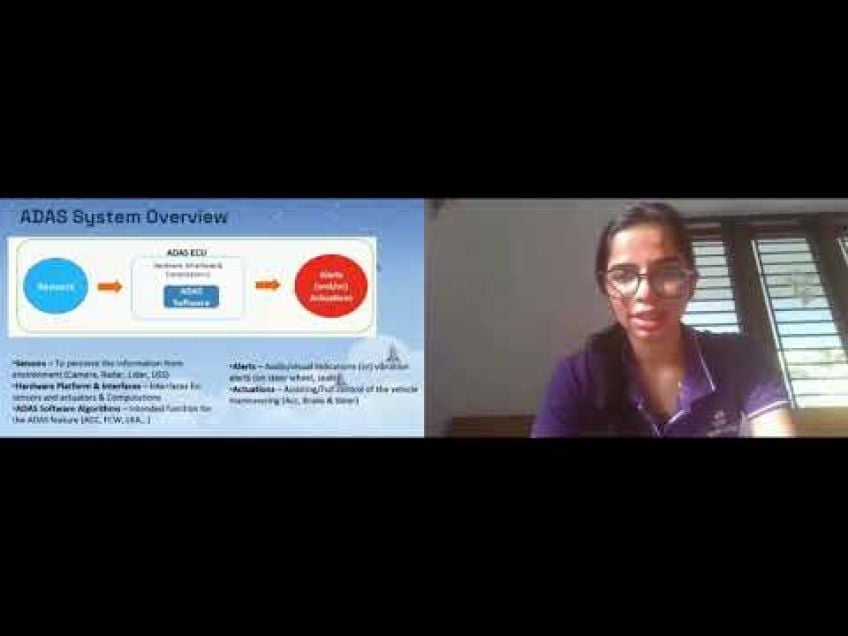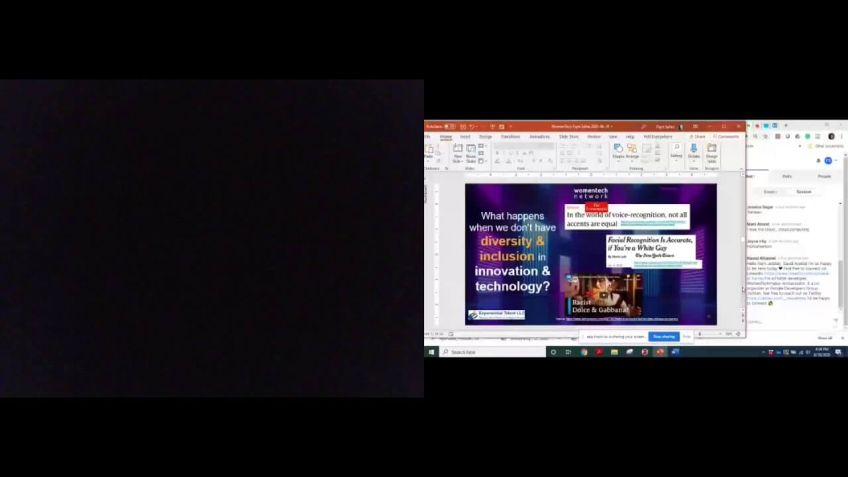Transforming The Transportation Status Quo with Self-Driving Vehicles
Prashanthi Raman
Vice President of Global Government AffairsReviews
Creating a Safer, More Accessible, and Sustainable World with Autonomous Vehicles
Hello everyone, and thank you for joining me today. I would like to extend a special thanks to the Women Tech Global Conference for affording me this opportunity to discuss technology with so many inspiring women. I am Prs Shai Rahman, the Vice President of Global Government Affairs at Cruz. Today, I will be sharing how autonomous vehicles (AVs) can help resolve some of our most pressing challenges, namely climate change, road safety, and accessibility.
In this discussion, I will cover three main areas: safety, accessibility, and sustainability, which form the pillars that constantly keep driving Cruise forward.
The Unacceptable Status Quo of Road Safety and The Role of Autonomous Vehicles
Transportation of today is riddled with unacceptable risks. The tragic reality is that around 40,000 Americans lose their lives on our roadways every year. We have to tirelessly work to reduce this number to zero and thanks to technology's rapid evolution, AVs may hold the key to drastically improving road safety and driving innovation. For instance, AV technology does not get distracted or exhausted and can provide a continuous 360-degree view of its surroundings, making it an invaluable tool for making our roads safer. We have to focus not on who gets there fastest, but who gets there safest.
Building More Accessible and Inclusive Transportation For Everyone
Every individual deserves reliable, affordable, and equitable transportation. Sadly, people with disabilities often face barriers to these basic services. Here, self-driving technology can be quite empowering. It also paves the way for a reimagining of what vehicles can look like, thereby making transportation more accessible. Cruise is presently developing inclusive mobility products designed with all riders in mind. This includes the Cruise Origin Mobility, the first vehicle fully autonomous and wheelchair accessible vehicle, developed in partnership with General Motors.
Realizing a Sustainable Future with Electric Autonomous Vehicles
The rise of pollution caused by transportation demands a sustainable generation of vehicles. At Cruise, we have always been electric and are now the only AV company developing zero-emission self-driving cars from the ground up. We are convinced that in order to reap the substantial societal benefits AVs offer, all AVs must be EVs. Our vehicles are powered entirely by renewable energy sourced from family farms in Central Valley. By shifting to zero-emission vehicles at scale, we can contribute to the mitigation of climate change and its harmful impacts.
Learning from emerging technologies can improve the world and proves quite exciting. As we build a new industry from scratch, we have to focus on how our technology can foster resilient communities, ensure a sustainable future, and ameliorate accessibility. We must strive to launch our technologies with communities, engage in real conversations and understand their needs, hopes, and current frustrations. Furthermore, building relationships with regulators, lawmakers, and other decision-makers is prudent to ensure the industry's future success and how we can collectively benefit our communities.
Thank you so much for your time and participation. On this note, I wrap up my discussion and look forward to answering any questions in the Q&A session.
Video Transcription
Hello, everyone. Thank you so much for joining me today. Special thanks to the Women Tech Global Conference for this opportunity to connect with so many other inspiring women in tech. Um My name is Prs Shai Rahman and I am the Vice president of Global Government Affairs at Cruz.
Today. I'm gonna talk to you a little bit about cruise and um sort of where we are in the the process as well as what our basic tenants are and how we're navigating the uh the industry as a whole from an autonomous vehicle standpoint. So Cruise is an all electric autonomous vehicle company. It's based in San Francisco focused on giving people more access to more of what they want and need all while sa saving lives and improving the health of our planet. So we are at a critical moment in the A V industry which is advancing quickly in 2021 cruise received the first permit to put passengers in a driverless vehicle without a fare. And last June, we received the first ever driverless deployment permit to operate a commercial driverless ride, hail service in a major US city. It is an exciting opportunity to build a new industry from the ground up. And with this comes another opportunity, the chance to help solve some of our most pressing challenges including climate change, road safety and accessibility. So in this afternoon's talk, I'll share more about how all electric autonomous vehicles can do this and what I've learned when it to building support for emerging technologies and their benefits.
So we're gonna cover three main areas today, the pillars that drives unintended cruise forward, safety, accessibility and sustainability. So first let's discuss safety and today's status quo, the status quo of transportation today is completely unacceptable. Approximately 40,000 Americans die on us roadways every year, which is truly an astounding and tragic reality. It's just simply unacceptable number and it's quite frankly, a moral failing and we cannot stop working until we get that to zero. It's also a false choice to say that we have to choose between performance and safety or between innovation and public trust. We wouldn't do this work if we didn't think that to be true. So with A vs, we have a unique opportunity to help improve the safety of our roads while furthering innovation. For example, A B technology doesn't get distracted or drunk or drowsy. Cruise vehicles also use dozens of sensors simultaneously to get a continuous 360 degree view of their surroundings.
And we purposely started in cruise in San Francisco, not because it's an easy place to drive, but precisely because it is one of the hardest. So we will have better, safer service in the long term because of it, vehicles also only represent one part of road safety. And we believe it's important to hear from those in communities including neighborhood merchant bike and pedestrian groups to understand how we can work in partnership to make our streets safer for all road users. Ultimately, our focus is not, is not about who gets there the fastest but who gets there. The safest and emerging technology like autonomous vehicles can help to make huge improvements towards a skull. Let's move on to accessibility and to set the stage as we build the future of transportation. We wanna build the future of transportation for everyone, particularly for those who have long been underserved by the options of today. For too long. Those people with disabilities have faced barriers to reliable, affordable equitable transportation options, self driving technology has the power to empower people with disabilities to participate fully in society, including wheelchair users, people who are blind or low vision seniors, those recovering from injuries and many more.
It also offers the opportunity to reimagine what vehicles look like so that transportation can be more accessible. Cruise recognizes that in order to achieve inclusive inclusive mobility products and services must be designed with all riders in mind. For example, in partnership with General Motors Cruise is developing the first vehicle designed from the ground up to be fully autonomous and wheelchair accessible. It's called the cruise origin mobility. We've learned that through real dialogue and partnership with accessibility advocates and community members is the best and most impactful way to do this, especially as we expand commercialization. In 2023 we're also partnering with members of our community and local accessibility groups and organizations to test the crews origin mobility to ensure our vehicles and app are as inclusive as possible. In 2022 alone, this helped us to develop 12 new accessibility features and complete five user experience, accessibility focus studies. Another key aspect of accessibility is using emerging technology to better connect those in our communities to basic needs such as food and health care services and economic opportunity.
A V companies have a responsibility to leverage their incredible technology in service of the public good and help to address some of the challenges our community members face day to day. That's why Cruz launched our dedicated social impact program, Cruise for Good. At the onset of the pandemic.
Bruce established two long term partnerships with the San Francisco Marine Food Bank and sf New Deal to use its fleet to deliver meals to help residents in need and support local restaurants. These efforts help connect residents in need and expand the ways A VS can serve our communities to date. Crease has delivered 2.4 million meals. 80% of which are delivered to zip codes below the poverty line. These meal deliveries have also offset 100 and five metric tons of CO2 emissions. We're also currently working with sf new deal to offer free rides to restaurant and hos hospitality workers who are often underserved by transportation options due to untraditional working hours.
We found that the key to ensuring we are addressing our most urgent needs is partnering with organizations who know the community best. That's why we really consider how we launch with communities and not them. These partnerships represent the best of a sustainable autonomous vehicle technology has to offer by working to improve the quality of life in our cities. Moreover, cruise is proud to be the only A B company to be involved with the pledged 1% movement by committing 1% of its fleet to serve local communities in need, not just in San Francisco, but everywhere cruise goes. Finally, as we have seen pollution caused by transportation, transportation.
Today, the new generation of vehicles to transport people and goods around has to be sustainable. It's why cruise has been electric from the start. Emerging technology can also have a huge hand in advancing our chemicals, harmful transportation emissions from combustion engine vehicles and truck traffic are the single largest contributor to climate change but shifting to zero emission vehicles at scale can help to change his course.
Cruise is proud to be the only A B company that is developing zero emission self driving cars from the ground up and this was an intentional choice if we're going to build this new industry from scratch. There's no reason why we can't simultaneously address some of our biggest challenge in the transportation ecosystem of today to us. Real innovation is also zero emission and not being afraid to take a stand early and has helped us to maximize our impact. We believe that all A BS must be EBS in order to achieve the massive societal benefits from self driving technology needed to combat climate change and its harmful impacts. Our fleet is powered by 100% renewable energy that we source from family farms in Central valley. We're investing in the charging infrastructure necessary to scale up our E VA vs including the development of one of the largest ev charging stations in North America in San Francisco, that investment infrastructure will necessarily grow as our fleet and our operations grow to other markets.
This commitment is present in present in every mile we drive. For example, in 2022 our all electric renewable power fleet achieved 2.7 million plus electric miles across three markets, 3.1 gigawatt hours of renewable solar power use and about 1200 metric tons of tailpipe carbon emissions avoided from using electric vehicles. Partnerships also play a significant role in driving broader impact across the industry. We've worked to extend this vision by partnering with environmentalists, elected officials and other A B companies to support a new California law that requires light duty A BS to be zero emission by 2030.
So as we wrap up, let's turn to what we've learned and what to be cognizant of as we move forward. Emerging technologies presents enormous opportunities for innovation and for empowering our communities. But it's not always easy, especially especially when you're essentially building a new industry from scratch.
What I have found critical to making headway is clearly defining your goals as early as possible And staying true to those cruz chose early on to focus on how our technology can help build more resilient communities, create a more sustainable future and improve accessibility.
Having these priorities set early has given us a clear path to how we can have a positive impact. Working hand in hand with community partners every single day, we fundamentally believe we must launch with communities and not on a, as I said, especially when launching new technology.
It's so important to take the time to get to know the communities you'll be serving to understand their needs, current frustrations and hopes. This also provides you with an opportunity to educate. First hand. Another point is collaborating with regulators, lawmakers and other decision makers who have an essential role to play in the success of the A B industry. When it comes to doing something new, we're all essentially learning at the same time, building strong partnerships with those who are creating the framework of a new industry is helpful to ensure technology's continued development support scaling and align on how we can work together to benefit our communities.
So we're only starting to scratch the surface when it comes to seeing how A B and so many other types of emerging technologies can improve the world. And that is just so exciting. Before I end, I want to show that while we are doing a lot of work, we have time to share that work in some truly unforgettable ways. So before I take, let you take a look. Thank you for joining me. It's been a pleasure to share more of my experiences if we have time at the end. Although I, I know we're running short, I'll be happy to answer any questions in the Q and A box. But for now, let's take a look.
Oh my God, I love the city and I love the city. Everything about it is what you want. Only two times. You get a chance to see the city is when you're being driven or when you walk in. If you're driving, you can't see the city. The whole business of transportation was huge because people really didn't have cars as we do these days. We rode the public transit system and the taxi service wasn't very good because I called that and it may or may not show up. It wouldn't go to certain parts of the city. It wouldn't go where poor people live. Transportation unless it was a public transit system was always iffy from a cost standpoint. Here it go. What do you think? I love it. Yeah, just to be my car. I love it. I love it. I love it. It's the kind of uh transportation that will make life much more comfortable for people. No more drunk driving. No more running red lights. So, anything that they, the idea that the car that I'm in will be far safer, not being driven by me. I know I'm like a little kid.
So thank you so much. If there are any questions, I'm happy to answer one or two of them. Um And if not, I will wish you very the best of the rest of the day. Um And, and send it and Oh, well, thank you. But kind of navigate San Francisco's Lombard Street. We are definitely working on the very dynamic streets of San Francisco right now, both in the testing and commercial phases. Uh We are operating almost all of San Francisco at this point. Um And so we are hoping to really tackle all of the challenges including Lombard Street. Thank you. Any other questions? Well, thank you so much for your time and attention and um interest in this and I hope to see many of you uh in in the next conference. Thank you again to the organizers. Um It has been a privilege and an honor to share the stage with so many kind people. So thank you women Tech Global conference um and we will see you soon. Take care, happy writing.





No comments so far – be the first to share your thoughts!